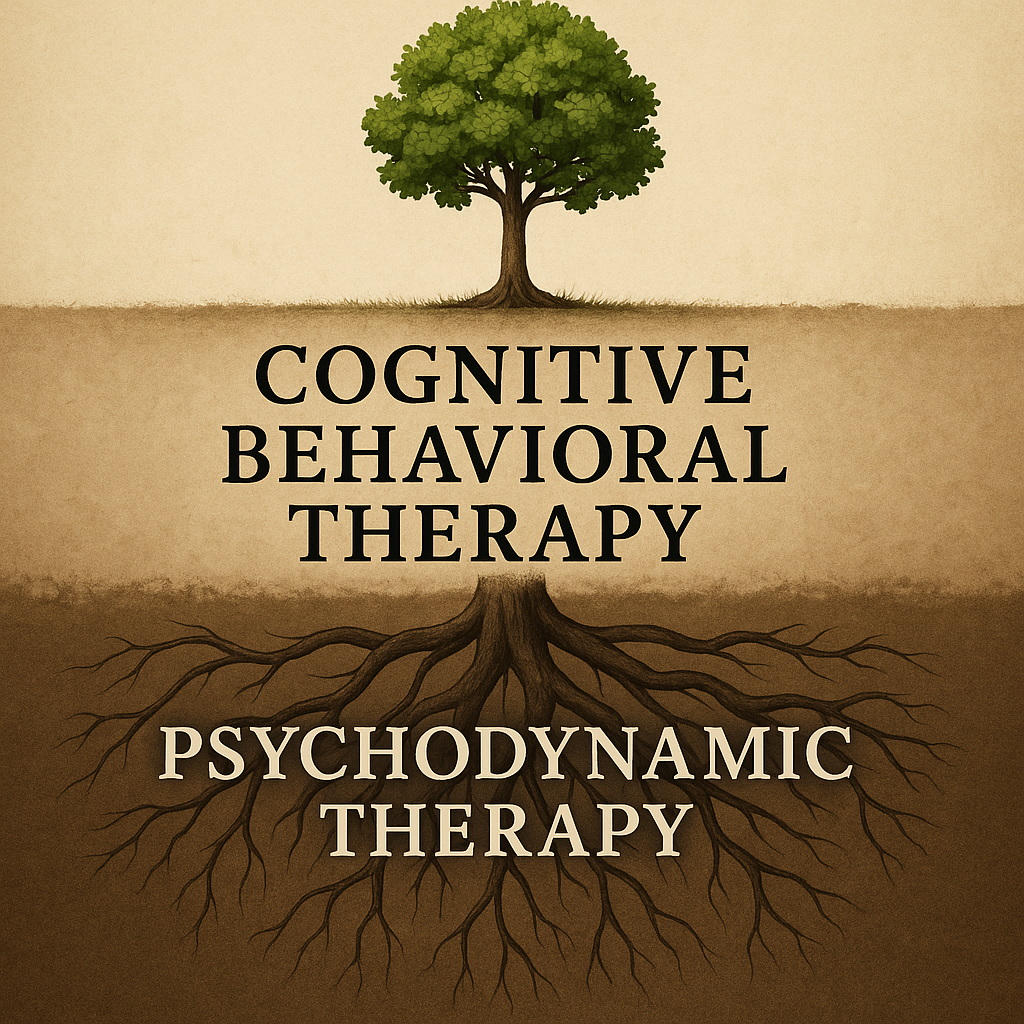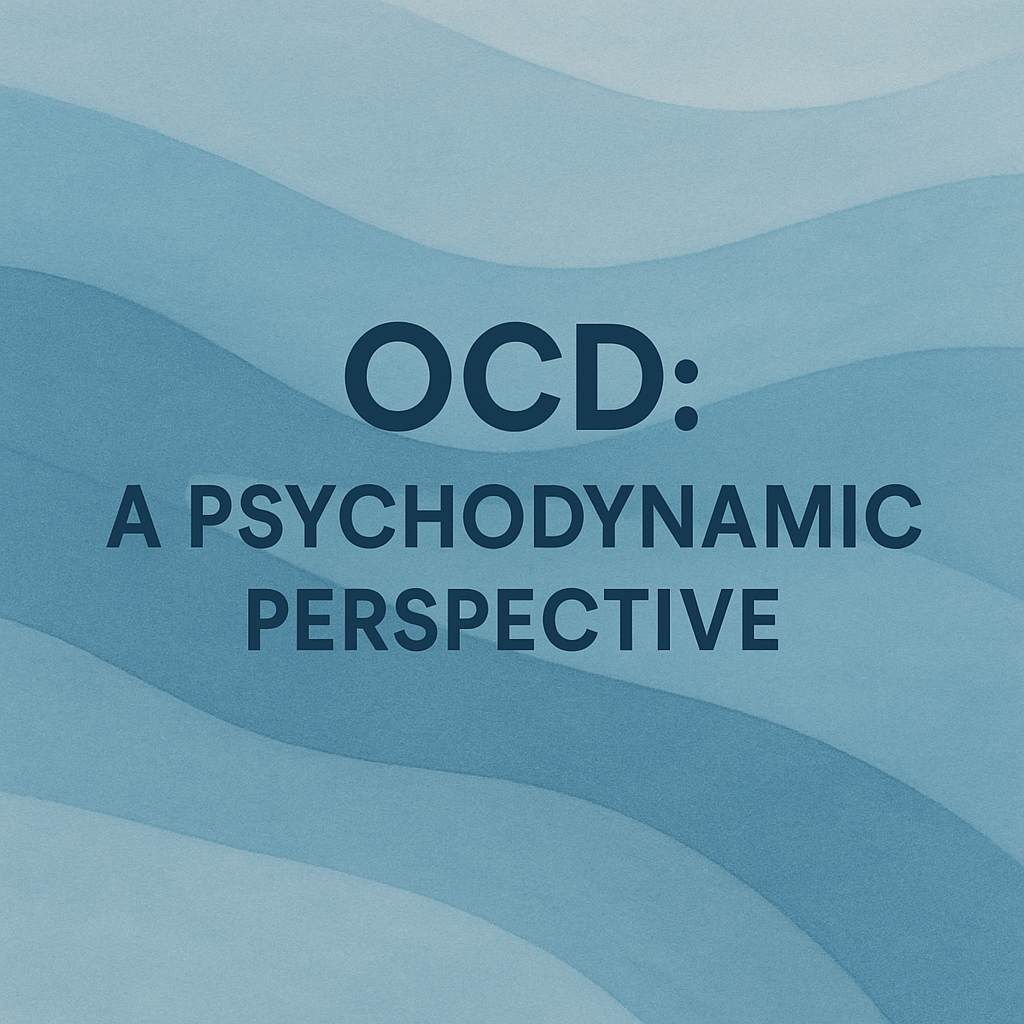Uncovering the Unconscious, Healing Through Relationship
In today’s fast-paced world, where therapy is often expected to deliver quick results, psychodynamic therapy offers something more enduring: depth, reflection, and transformation. Instead of just managing symptoms, it asks deeper questions—Why do I feel this way? Why does this pattern repeat? What lies beneath my reactions?
This approach rests on the idea that much of what drives our behavior and emotional life lies outside of conscious awareness. Our present-day struggles—whether with relationships, self-esteem, anxiety, or depression—often trace back to formative emotional experiences and unresolved internal conflicts. Psychodynamic therapy is designed to explore these roots, offering a path toward greater self-understandingSelf-Understanding refers to the awareness and insight clients gain about their own thoughts, feelin... and emotional freedom.
What Sets Psychodynamic Therapy Apart?
At its heart, psychodynamic therapy believes that early relationships shape our inner world. The way we learned to love, cope, seek approval, or protect ourselves emotionally often forms the blueprint for how we relate in adulthood.
Rather than focus solely on managing thoughts or behaviors, this approach invites you to explore:
- Recurring emotional themes and relationship patterns
- Unconscious motivations behind your choices
- Long-standing defenses that once protected you but now limit you
- Inner conflicts between parts of the self
- How the therapeutic relationshipThe Therapeutic Relationship is the bond formed between the therapist and client, which plays a cruc... itself mirrors past emotional dynamics
This therapy isn’t about quick solutions—it’s about meaningful change. By understanding how past experiences shaped your inner world, you can begin to make conscious choices, rather than repeating old patterns automatically.
The Role of Defense MechanismsDefense Mechanisms are unconscious psychological strategies used by individuals to protect themselve... and Personality Patterns
One of the cornerstones of psychodynamic thinking is the idea that we all use defense mechanisms—psychological strategies that help us avoid emotional pain or internal conflictInternal Conflict refers to the psychological struggle that occurs within an individual when facing .... Some are healthy and flexible (like humor or sublimation), while others can become rigid and limiting (like denial or projectionProjection is a defense mechanism where individuals attribute their own unwanted thoughts, feelings,...).
Rather than judging these defenses, psychodynamic therapy aims to understand their purpose. What were they protecting you from? What emotional truth lies underneath?
Closely related are personality patterns—not in the diagnostic sense, but as adaptive emotional styles. For example:
- A person who appears self-sufficient and distant may have learned early on that closeness was unsafe.
- Someone highly perfectionistic might have developed that stance as a way to earn love or avoid criticism.
- An individual who seems chronically self-critical may be internalizing voices from early caregivers.
Understanding these patterns is not about labelingLabeling is a cognitive distortion where individuals assign a negative label to themselves or others..., but about compassionately exploring the strategies you’ve used to survive—and how they might be reshaped to help you thrive.
The Healing Power of the Therapeutic Relationship
While insightInsight refers to the understanding and awareness clients gain about their thoughts, feelings, and b... is vital, what truly transforms in psychodynamic therapy is the relationship itself. The therapy room becomes a kind of emotional laboratory—a space where old patterns play out in real time and can be observed, understood, and reworked.
You might find yourself reacting to your therapist in ways that echo past relationships—feeling mistrustful, ashamed, overly attached, or dismissed. These reactions, called transferenceTransference is a phenomenon in therapy where clients project feelings and emotions from past relati..., are not “wrong”—they’re windows into your emotional world.
Equally important is the therapist’s emotional response, or countertransferenceCountertransference occurs when therapists project their own feelings and experiences onto the clien..., which can offer rich information about how you’re experienced in relationship. When the therapist stays emotionally present, reflective, and attuned, these moments become opportunities for healing.
In many ways, the therapy relationship becomes a corrective emotional experience: one where you’re seen more clearly, responded to more compassionately, and invited to be more authentic than you may have been able to be elsewhere.
Why People Choose This Kind of Therapy
Psychodynamic therapy is often chosen by those who:
- Sense that their struggles run deeper than surface-level coping strategiesCoping strategies are techniques used to manage stress, anxiety, or other emotional challenges. CBT ...
- Are curious about the “why” behind their feelings, behaviors, or relationship patterns
- Feel stuck in repetitive dynamics or unexplained emotional pain
- Want not just symptom relief, but self-understanding and emotional growth
It can be especially powerful for those with histories of relational traumaRelational Trauma refers to trauma that occurs within the context of interpersonal relationships, su..., identity confusion, or internal conflict. This therapy doesn’t offer quick fixes—but it does offer lasting transformation for those willing to explore beneath the surface.
Final Thoughts
Psychodynamic therapy is a journey—into memory, emotion, and meaning. It asks us to slow down, reflect, and feel. It helps us uncover the stories we’ve inherited, the defenses we’ve built, and the longing for connection that runs through us all.
It is, ultimately, a therapy of relationship—between past and present, between parts of the self, and between client and therapist. And in that relationship, change becomes possible—not by being told what to do, but by being deeply understood.





